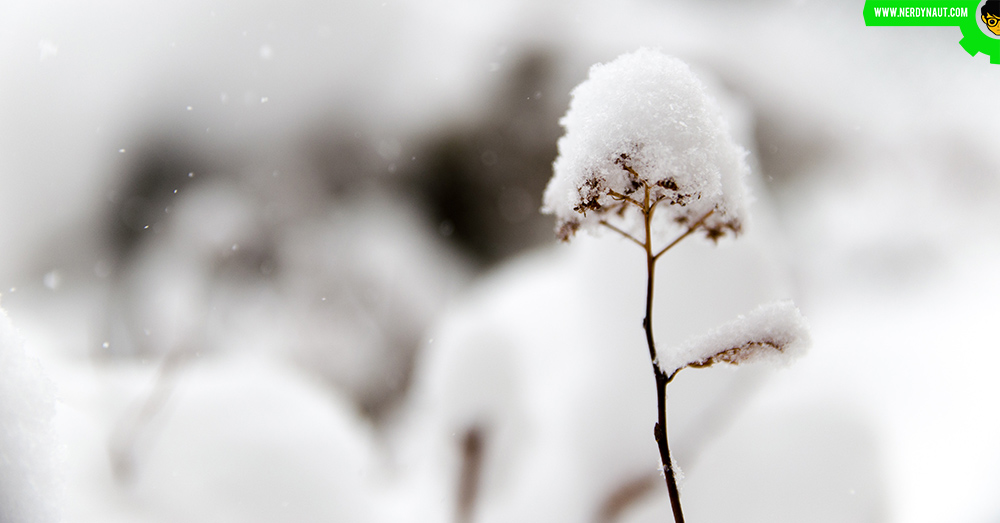
A blossoming flower in a meadow full of other colorful flowers in the height of springtime is a common sight. It is rare to see a flower protruding from the snow in winter, for instance. This is all true for wildflowers but house plans are a whole different issue. They can bloom during winter because they depend upon the microclimate of the house, but it’s tricky to make them do so. This can be artificially induced by tricking the plant into thinking that spring is here and that it is time to blossom. Not all plants are the same, so the two best species to attempt this trick are paperwhite narcissus and amaryllis. In order to force the bulbs to bloom, they will have to be chilled and warmed up quickly. If you start this process now, you can expect first results as early as February, just in time for Valentine’s Day. If successful, you will have your own blooms instead of having to buy them. Now, how exactly can we do to make December flowers bloom this season?
Forcing the bulbs
To begin with, create a mixture of plain aquarium gravel and charcoal that will be laid down evenly at the height of two inches on the bottom of the jar. Then place the bulbs into the mix and add water to cover the bulbs. Nature will run its course, but you will need to keep the jar in direct sunlight and preserve the water level so the seeds are constantly soaked. If done correctly, you should see first green shoots protruding from the seeds. However, for the seeds to fully blossom into flowers, it will take up to a full month. This activity should be repeated several times every two weeks so you would constantly have fresh flowers in your house.
Seeding flowers

There is always the easy way out and seeding flowers is just it. Garden centers and DIY stores are not the only places where you can buy blooms all year round. Supermarkets and even dollar stores now have ready-made blooms to be purchased sun or snow outside. Not only is the selection of flowers and colors greater this way, but they grow faster than regular bulbs. If you decide to grow flowers from seeds, then all you need is a pot with humus, constant watering and a source of light. As you have realized by now, this method is much simpler than forcing the bulb which is an intricate process. The aforementioned light needs to be warm. Artificial lights will do just fine as they are useful in gardening.
Opting for winter plants
We keep saying “flowers” while that word is all-encompassing. Actually, there are numerous species of plants that grow quite well even during winter time. By choosing to plant them, you increase your chance of having a blooming winter. One such plant is winter aconite. As you can guess from its name, it grows even during cold spells but opens its verdant yellow globes only when hit by sunshine. In the wild, they grow under tree canopies, so keeping them in a shade would not hurt.
Another flower that boasts the color yellow is the winter jasmine that starts growing around November. Bright colors are also characteristic of the Nepalese paper plant that flowers in January. It also requires a warm position and a good soil full of nutrients to grow. Its color is most usually pink and the foliage can be quite dense and lavish. Needless to say, for all the species listed you have to prevent the ground from freezing. This can easily happen if you keep your flower pots outside in the balcony, for instance. Bring all the pots in once the cold weather sets in so as to protect them and nurture them inside where it is warm.
Use the cold weather to weed the garden

The more verdant your garden gets, the more nutrients those pesky weeds get. That is why it can be tricky to weed the garden during summertime but winter is ideal for this job. Since they are deprived of nutrients from the ground, sunlight, and water, weeds start to dry and become brittle. The chilly air weakens them further, so they can be easily removed by a hand scythe weeder, as made by Hoselink. That is why you shouldn’t store away your gardening equipment as you will need it during winter as well.
Caring for the lawn outside
If you have a garden outside, you obviously cannot “transfer” it inside. Grassy lawns are especially exposed to the chilling cold, so you have to take preventive measures during winter so your lawn would survive and be ready for the next season of blossoming. Good nutrition is essential for preserving your lawn. There are special fertilizers designed for the winter period so be sure to apply them. In order to take effect, the fertilizer needs water so adjust your watering schedule. Also, avoid watering in the afternoon and in the evening. During night ground soaks in water harder than during daylight. The watering should, therefore, take place in the morning, before noon.
Topiary
The whole reason behind making the garden and flowers blossom is simply the aesthetic appeal. We want our flowers to look nice but this can be hard to achieve in the garden which is located outside. That is why topiary is an excellent solution to this problem. In order to make the garden presentable, the introduction of various topiary shapes will hold all the plants together so they won’t sag during the biggest of freezes. In fact, the cold will only make the shape firmer and hold it upright. If your trees get clipped and shaped, they will become centerpieces of the garden and distract the look of passersby from all the disheveled plants. Of course, topiary means that you will have to pay for the services of gardeners but it will be worthwhile.
Whichever method you decide on, don’t forget to invest a lot of love in your blossoms. You are trying to get the very best out of flowers during winter because you fancy their look and smell. Really, who wouldn’t?




